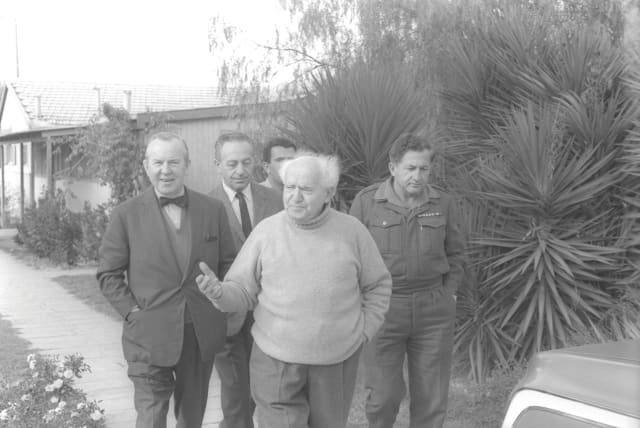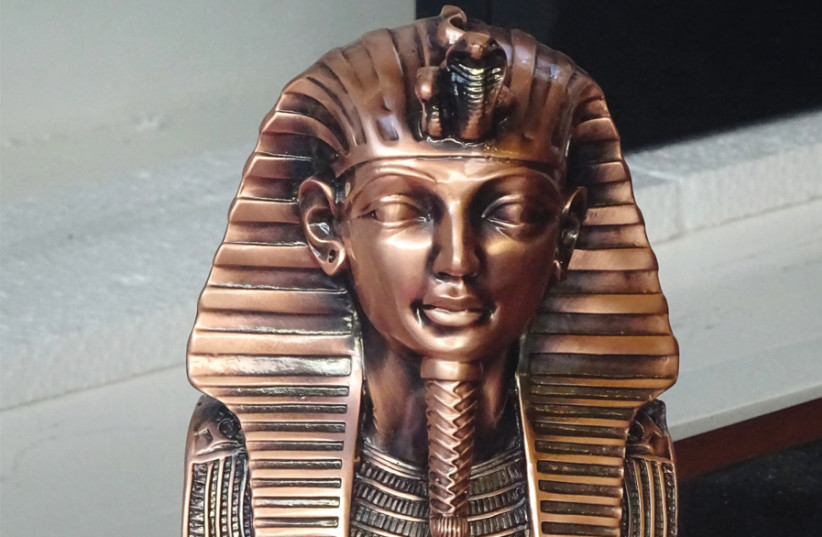What do Pharaoh, Moses teach Israel about its leadership crisis?

MIDDLE ISRAEL: There was a time when leaders thought of things larger than themselves.
Staring at his dead son’s body while his country was reeling from hellfire, disease and eclipse, Pharaoh finally cracked under the mounting pressure and let Israel go, only to quickly realize what he had done – surrender – and set out to offset his choice.
As Jews retold the story of their forebears’ journey from bondage to freedom, the plot’s antichrist became our mythology’s evil incarnate, the wicked man who, like the American South, enslaved a nation and, like Nazi Germany, murdered babies en masse.
Even so, Pharaoh offers us lessons about leadership no less than Moses, lessons that, along with those of his archrival, are now so relevant for the Jewish state, as it faces an epic crisis of leadership.
THE ONE positive lesson both Pharaoh and Moses offer any future leader is to lead by example.
Yes, Pharaoh’s decision to storm the departing Israelites was both immoral and unwise, but he executed that decision not by firing orders from a distant bunker’s depth, but by personally mounting a chariot and charging ahead of his troops into the battle where he and they would die.
In terms of leadership, it was the equivalent of what Moses was also doing in those same moments, as he joined his people’s journey to freedom, and did so not on chariot, horseback or sedan, but on his feet, like the multitude behind him, as he would do for the following 40 years.
Obviously, in every other respect this couple’s careers were perfect opposites.
In terms of character, Moses was so humble that even God had to go out of his way to convince him to become a leader, whereas Pharaoh was so arrogant he couldn’t accept his defeat even by successive environmental disasters.
In terms of instincts, Moses was so impatient with injustice that when he saw one stranger attack another he barged into the fight and beat the attacker to death. To Pharaoh, by contrast, justice was so alien that he could sentence babies to death.
In terms of ideas, Pharaoh embodied the despotic formula of maximum power and minimum humanity, while Moses formulated the humanistic combination of weak government and powerful courts.
That is why Moses gave Israel a law book well before it had a state, or even reached its land. That is also why he limited the size of future leaders’ armies and treasure, and that is why he thought the appointment of a judiciary should be the people’s task, not its leader’s (Deuteronomy 16:18).
Appalled by the infanticide that he first survived and then could follow from within the palace in which he was raised, Moses now etched in stone “You shall not murder,” and having seen government roundly abuse the people he banned theft, robbery and perjury, laws that to Pharaoh were inconceivable, because he worshiped power, denied morality’s existence and mistook himself for God.
Such, then were the differences of mind and character between Moses and Pharaoh, but no smaller was the experiential gap between their careers; the gap between one man who was born royal and led a state rather than its people, and another man who was born a death convict, never headed a state, but did lead a people, marching with it into the future through desolation’s aridity and heat.
This atmospheric aspect of Moses’s life was detected by another great leader, one whose life actually journeyed in the opposite direction, from civilization’s heartbeat to its unpopulated frontiers.
“It is no accident that the Law of Israel was given in the desert, and that the greatest teacher of our nation, Moses, was the leader of the nation in the wilderness,” wrote David Ben-Gurion shortly after replacing Tel Aviv’s bustle and the premiership’s commotion for a shack in Kibbutz Sde Boker. (“Why I Retired to the Desert,” New York Times, 28 March 1954).
Ensconced in the Negev Desert’s solitude, the former and future prime minister spent his days reading “the Bible, the great works of ancient Greece and Rome” and “the great thinkers of the Middle Ages and modern times,” while waxing poetic about his alter ego, Moses, admiring the desert’s moonscape.
“Here,” where “man sees the creation of God as it was in the beginning, rough, wild and unyielding... he becomes a partner with the Lord in the creation of the world,” for “here he sees the primeval nature in all its strength, unchanged and undisturbed by human hand,” and thus “does not give up in despair but finds within himself the vigor to meet the challenge and to strengthen his own powers of creation.”
Like Moses marching ahead of the people while showing them the path to freedom, Ben-Gurion did not merely preach about where the people should go, but went there himself.
And unlike Pharaoh, but so much like Moses, Ben-Gurion preached and also actively protected the judiciary’s independence. That is why, as noted by legal historian Nir Kedar of Bar-Ilan University (Ben-Gurion and the Constitution, Hebrew, 2015, pp. 162-164), he established independent courts and put them to work even while the War of Independence was raging, that is why he resisted pressures to appoint judges identified with his own Labor Party, that is why he let a rival leader (the Progressive Party’s Pinchas Rosen) lead the establishment of the Justice Ministry and the Supreme Court, and that is why he insisted that the attorney-general’s salary be equal to that of a Supreme Court judge.
Yes, there once were leaders who rather than inhabit glitzy towers atop urbanity’s thicket or sprawling mansions by the seashore’s caressing waves, lived and died in the wilderness, where they thought so much about the law, the future, and the people, and so little about themselves.
www.MiddleIsrael.netThe writer, a Hartman Institute fellow, is the author of the best-selling Mitz’ad Ha’ivelet Hayehudi (The Jewish March of Folly, Yediot Sfarim, 2019), a revisionist history of the Jewish people’s political leadership.
Jerusalem Post Store
`; document.getElementById("linkPremium").innerHTML = cont; var divWithLink = document.getElementById("premium-link"); if (divWithLink !== null && divWithLink !== 'undefined') { divWithLink.style.border = "solid 1px #cb0f3e"; divWithLink.style.textAlign = "center"; divWithLink.style.marginBottom = "15px"; divWithLink.style.marginTop = "15px"; divWithLink.style.width = "100%"; divWithLink.style.backgroundColor = "#122952"; divWithLink.style.color = "#ffffff"; divWithLink.style.lineHeight = "1.5"; } } (function (v, i) { });

